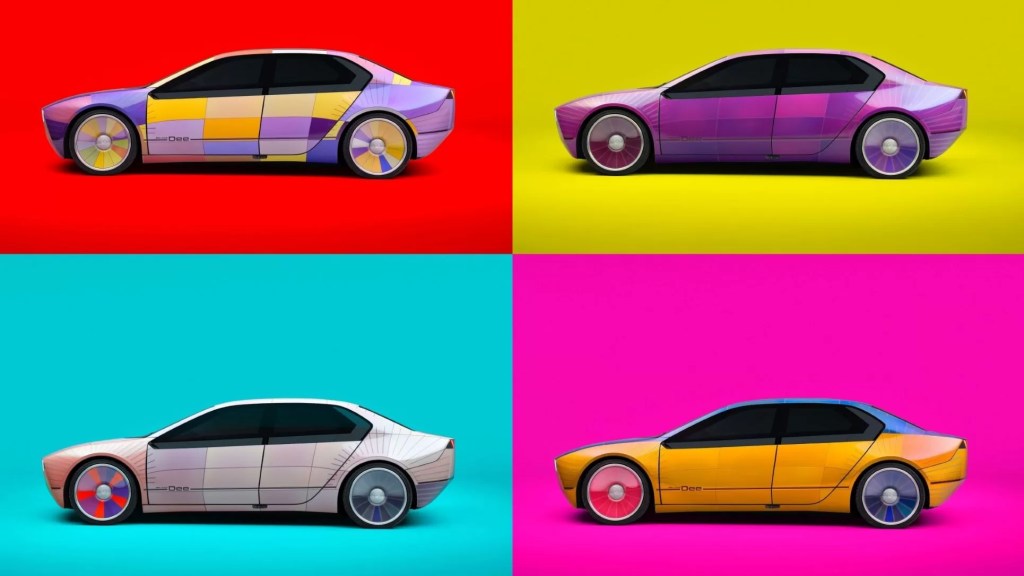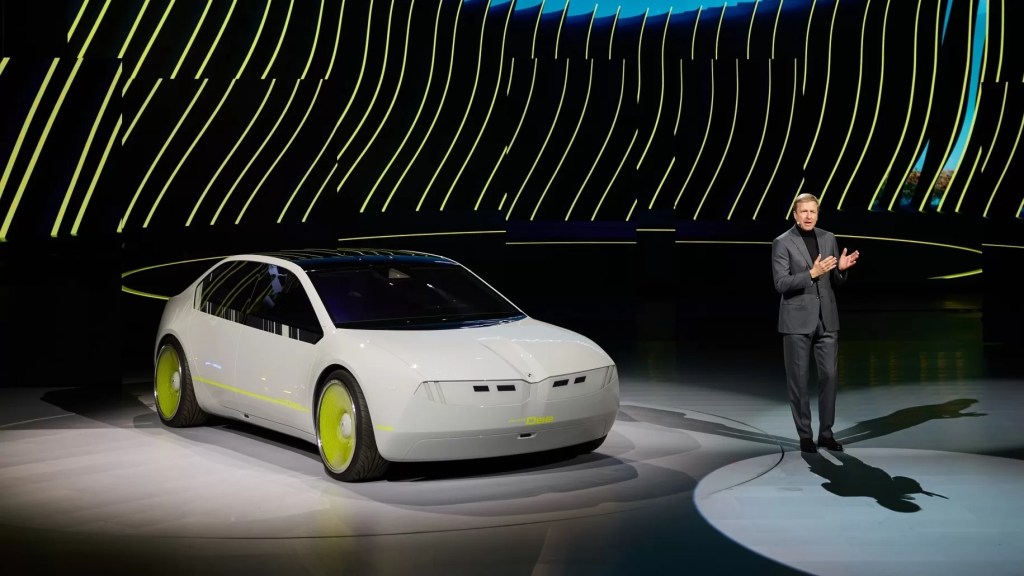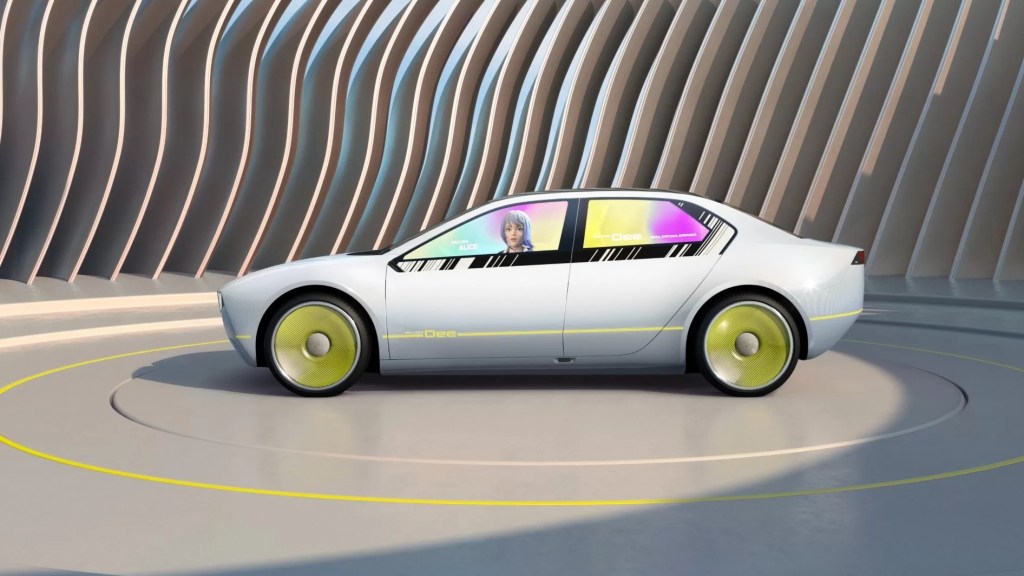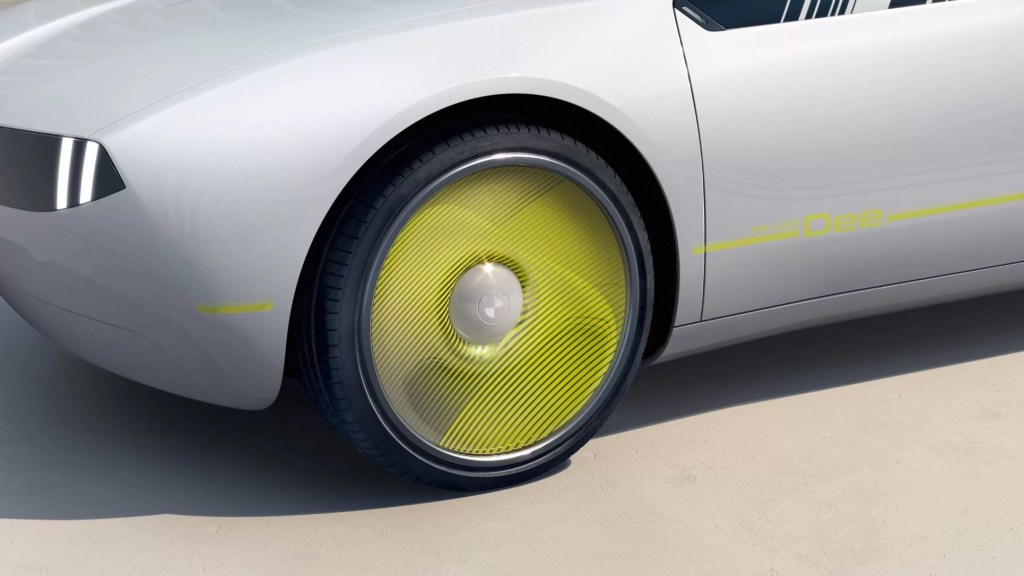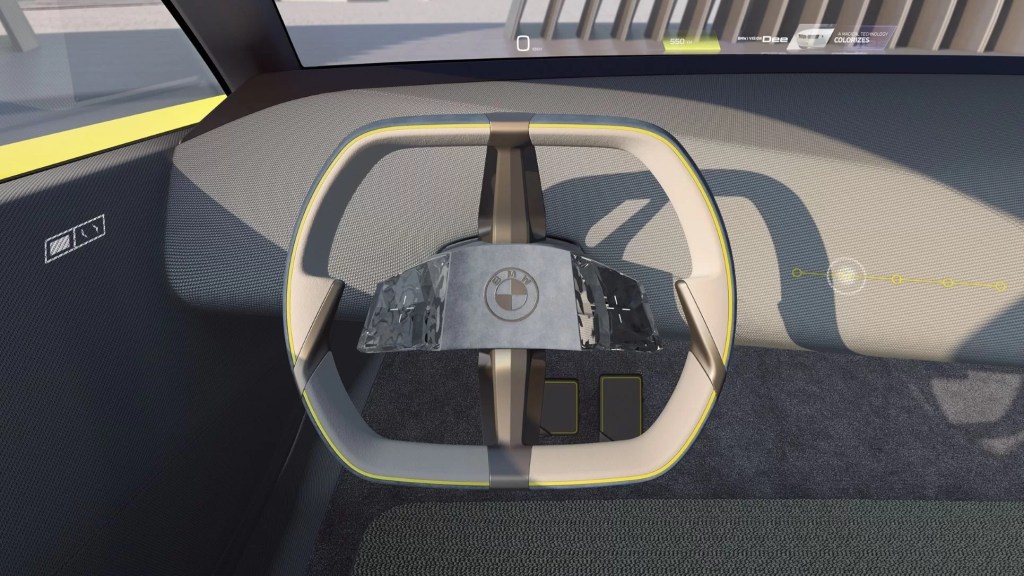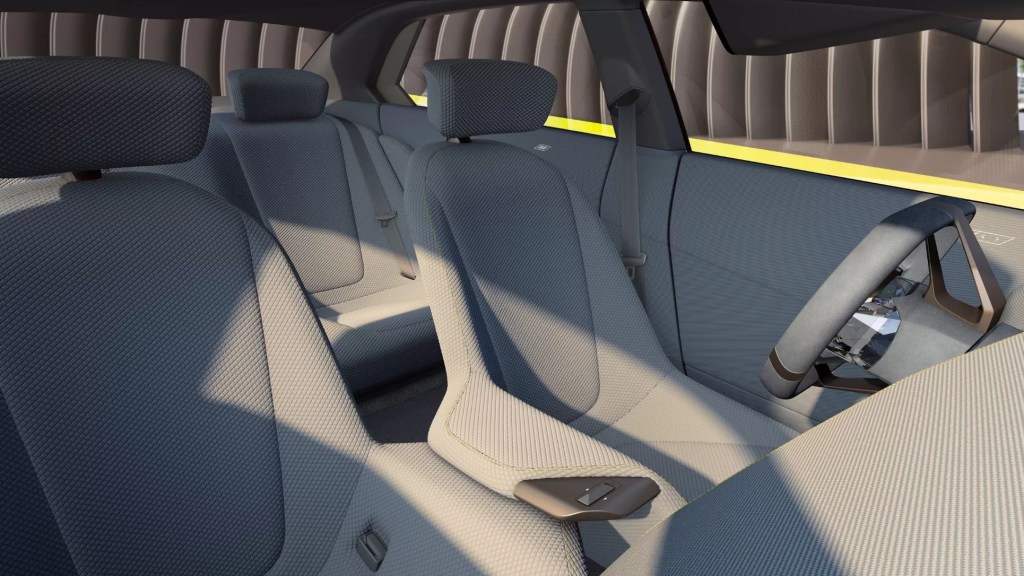BMW’s color-changing CES concept points to 2025 Neue Klasse
2023-01-13 / News / 14663 Sees / 0 CommentsAt CES 2023 in Las Vegas, the BMW Group shared its vision of future digital experiences, inside and outside the vehicle, with its i Vision Dee—a futuristic mid-size sedan with a new and welcome pared-down design language. The purpose of the Dee, short for Digital Emotional Experience, is to create a stronger bond between people and their BMW cars.
BMW execs believe that future digital functions will go far beyond the current level of voice control and advanced driver assistance systems. The car’s HUD (head-up display) extends across the full width of the windscreen, providing a glimpse of the company’s next vehicle generation. This innovation will be available in the models of the much-hyped Neue Klasse from 2025.
The concept “is another step on the road to the Neue Klass,” said Oliver Zipse, Chairman of the Board of Management of BMW AG and CES keynoter. “With this vision, we are looking far into the future and underlining the tremendous importance of digitalization for our upcoming product generations.”
“With the BMW i Vision Dee, we are showcasing what is possible when hardware and software merge,” added Zipse. “In this way, we are able to exploit the full potential of digitalization to transform the car into an intelligent companion. That is the future for automotive manufacturers—and, also, for BMW, the fusion of the virtual experience with genuine driving pleasure.”
With its “almost human capabilities,” the i Vision Dee accompanies drivers not only through real-life situations on the roads but also in their digital environment.
“A BMW lives by its unparalleled digital performance,” said Frank Weber, a Member of the Board of Management of BMW AG responsible for Development. “BMW i Vision Dee is about the perfect integration of virtual and physical experiences. Whoever excels at integrating the customer’s everyday digital worlds into the vehicle at all levels will succeed in mastering the future of car building.”
Color-changing E Ink
With the concept, the company has also refined its use of the color-changing spectacle it unveiled at the 2022 CES with the BMW iX Flow featuring E Ink technology. Instead of just the ability to change between black and white, the i Vision Dee’s exterior can now can now select from up to 32 colors—a first time worldwide, says the company.
To create the display of color, an e-paper film from E Ink is applied to the body surface. It is divided into 240 segments controlled individually, allowing an almost infinite variety of patterns to be generated and varied in seconds.
The concept car’s laser cutting process used to trim the film and the electronic control design were developed in partnership with E Ink. The adaptation of the technology for curved surfaces and the programming of the animations were developed by BMW Group’s in-house engineers.
At CES, E Ink announced the launch of Prism 3 in conjunction with its first use on the BMW concept. The next-generation tech it announced has a segmented display featuring dynamic color-changing capabilities using eight colors and combinations with patterns to create dynamic surfaces. The technology’s renowned bi-stability means that power is only consumed when displays are updated and not once the color is displayed.
“E Ink Prism offers the ability to design in a low power, sustainable display solution that is customizable and offers endless design opportunities through a combination of changing colors, patterns, and user-defined programs,” said Paul Apen, Chief Business and Operating Officer of E Ink Corp.’s U.S. Operations.
Reductive design
The Dee concept’s reductive design, inside and out, was deliberately pared down to focus attention on the digital experience and BMW’s DNA. The exterior uses a classic three-box sedan design “core of the BMW brand.” Traditional BMW design elements like the kidney grille, twin circular headlights, and Hofmeister kink are reimagined with phygital—the fusion of physical and digital—icons replacing analog elements.
Inside, the reductive use of materials, operating controls, and displays is meant to ensure that nothing distracts from the digital experience and a new feeling of enhanced driving pleasure. On the “unconventional” steering wheel’s central vertical spoke, touchpoints “come to life” when approached or touched. They control the selection of the content projected onto the windscreen and, together with the HUD, are intended to support the principle of “hands on the wheel, eyes on the road.”
“With BMW i Vision Dee, we are showing how the car can be seamlessly integrated into your digital life and become a trusty companion,” said Adrian van Hooydonk, head of BMW Group Design. “The vehicle itself becomes your portal to the digital world—with the driver always in control. Implemented the right way, technology will create worthwhile experiences, make you a better driver and simply bring humans and machines closer together.”
‘Mixed reality slider,’ HUD, and laser projection
The digital experience begins outside the vehicle with a personalized welcome scenario that combines graphical elements, light, and sound effects. Natural language serves as the simplest, most intuitive form of interaction, enabling better understanding between humans and their vehicles.
The headlights and the “closed” kidney grille form a common phygital icon on the vehicle’s uniform front surface, allowing it to produce different “facial expressions.” This means that the concept can “talk to people and express moods such as joy, astonishment, or approval visually.”
The concept can also project an image of the approaching driver’s or rider’s avatar onto the side window to further personalize the welcome scenario. This is enabled by headliner-mounted Appotronics laser projectors using proprietary intellectual property called ALPD (Advanced Laser Phosphor Display) technology. Founded in Silicon Valley, with a significant market share in Asia, the company partnered with BMW to create future-leading displays. Its CEO and Founder, Li Yi, was on hand to explain the cutting-edge laser phosphor technology, so look for that in a future article.
Inside BMW’s car, a “mixed reality slider,” in combination with an advanced HUD, is the digital highlight and central operating control concept. Using “shy tech” sensors on the instrument panel, drivers can decide how much digital content they want to see on the displays including the HUD. The five-step selection ranges from analog to driving-related information, the contents of the communications system, augmented-reality projection, or entry into virtual worlds. In parallel, dimmable windows can also be used to gradually fade out reality.
The BMW Group, a self-proclaimed automotive HUD trailblazer, has refined the technology over the past two decades. In the concept, projection across the entire width of the windscreen allows information to be displayed on the largest possible surface, demonstrating how an advanced HUD could be used in the future. The standard-production version of the HUD extending across the full width of the windshield will be used in the Neue Klasse from 2025.
The future of the BMW Group is said to be electric, circular, and digital. The i Vision Dee concept represents the digital aspect of the trio and is another milestone on the road to the next-generation Neue Klasse. Further insights and glimpses of the “revolutionary” vehicle concept of that product range are promised this year.
BMW i Vision Dee concept colors.
BMW i Vision Dee concept.
BMW i Vision Dee concept.
BMW i Vision Dee concept at CES keynote by Oliver Zipse.
BMW i Vision Dee concept with projected avatar.
BMW i Vision Dee concept road wheel.
BMW i Vision Dee concept.
BMW i Vision Dee concept controls and displays.
BMW i Vision Dee concept.
BMW i Vision Dee concept prototype.
More about“BMW i Vision,eink,eink display,prism3,BMW CES2023,”'s article.
The original address《BMW’s color-changing CES concept points to 2025 Neue Klasse》
